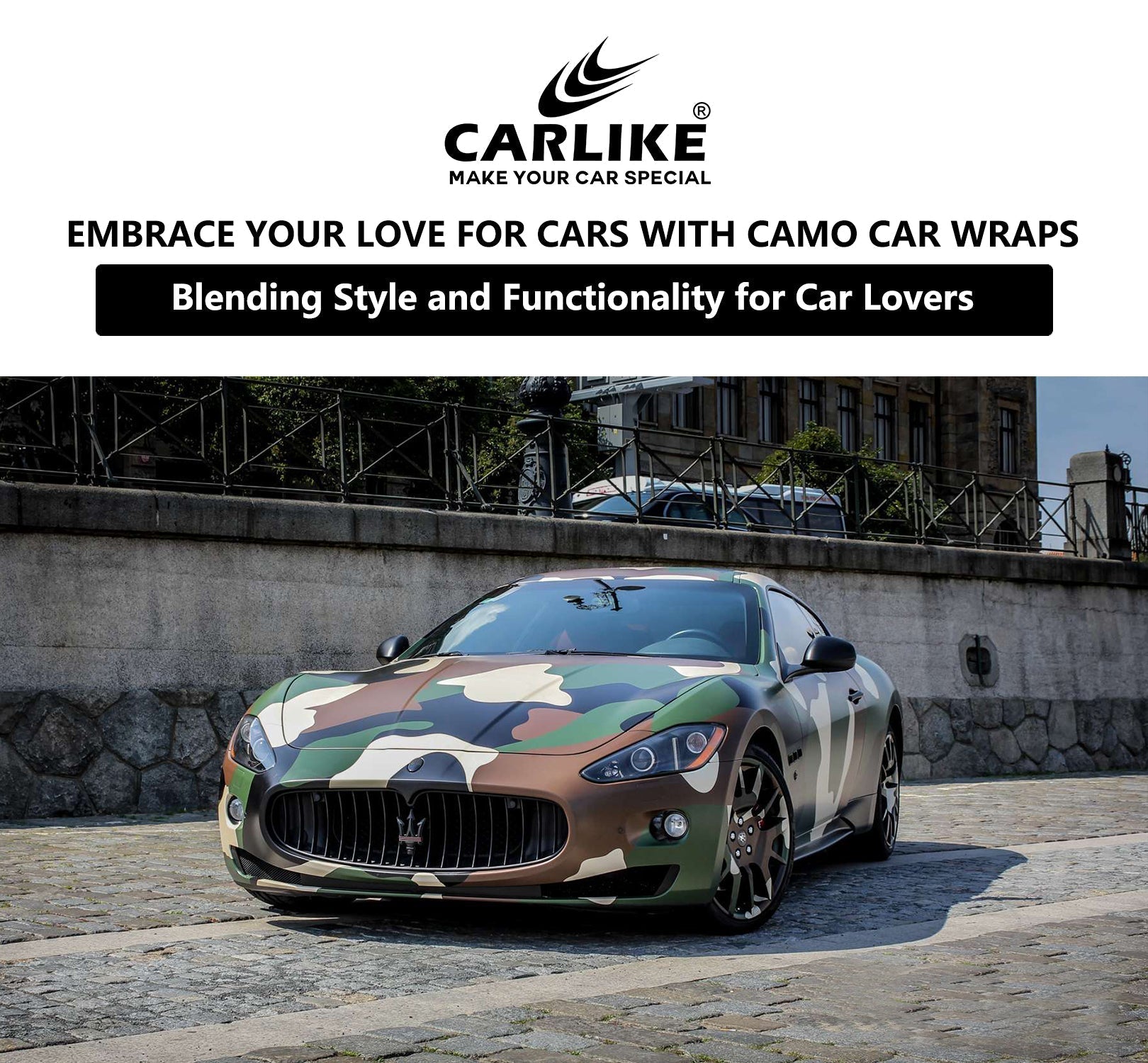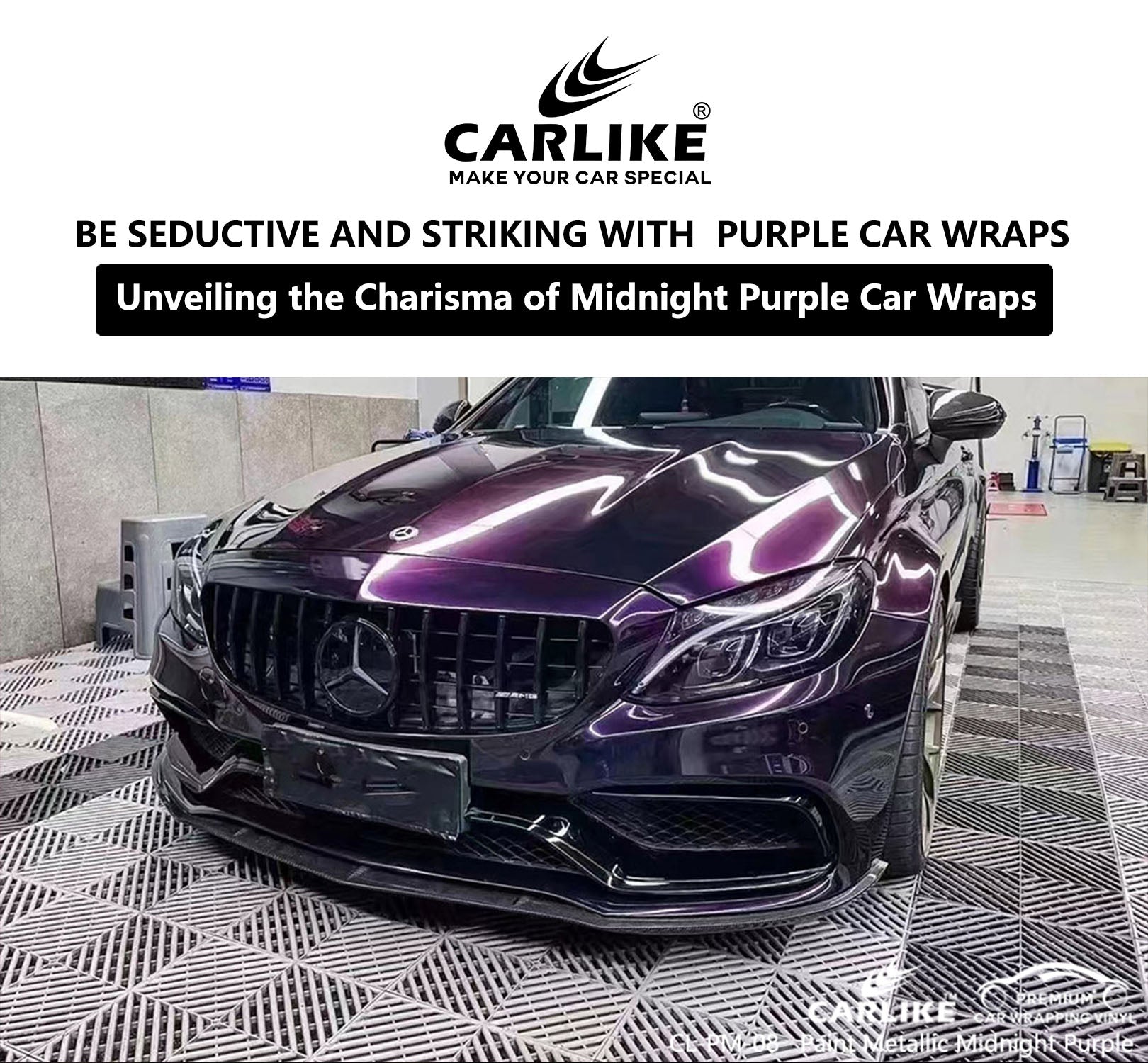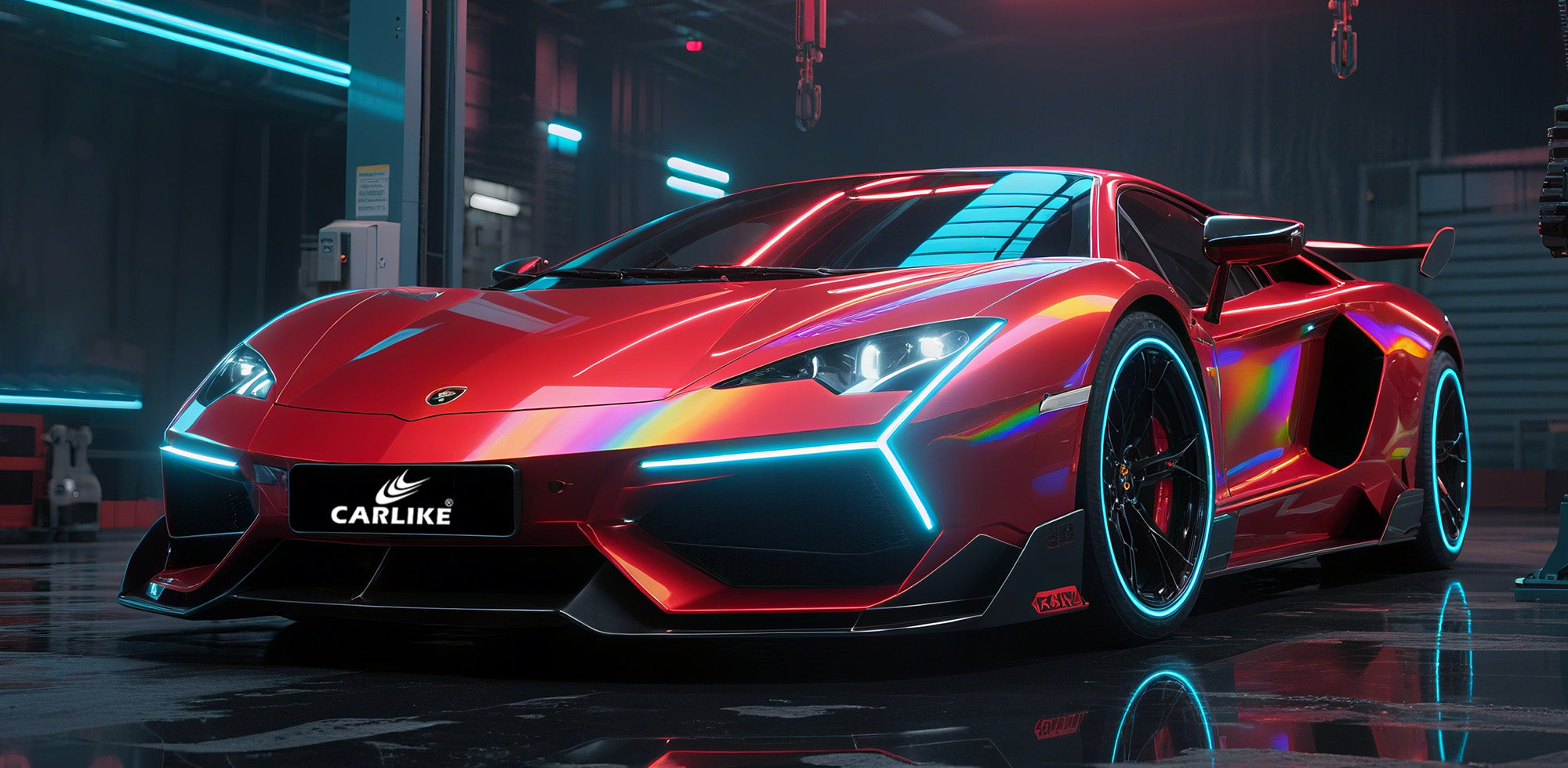Factors Affecting the Lifespan of Car Wraps
The lifespan of a car wrap, which refers to how long it can maintain its appearance and functionality, is influenced by several key factors. Understanding these factors is crucial for car owners who want to make informed decisions about investing in a car wrap and maximizing its longevity. Here are the primary factors that can affect the lifespan of car wraps:
1. Quality of Materials: The quality of the vinyl material used for the car wrap plays a significant role in determining its lifespan. High-quality vinyl wraps, typically made from premium cast vinyl, tend to be more durable and resistant to fading, cracking, and peeling. Investing in a reputable brand and ensuring the use of top-grade materials can significantly impact the lifespan of a car wrap.
2. Installation Technique: The skill and expertise of the installer can directly affect the longevity of a car wrap. Proper installation techniques, including thorough surface preparation, meticulous application, and attention to detail, are crucial. Any errors during installation, such as air bubbles, uneven adhesion, or improper trimming, can lead to premature wear and reduce the lifespan of the wrap.
3. Maintenance and Care: Regular maintenance and proper care are vital for preserving the lifespan of car wraps. Washing the wrapped vehicle using mild soap and water, avoiding abrasive cleaning agents or brushes, and using a microfiber cloth for gentle cleaning are recommended practices. Additionally, parking the car in shaded areas or using a protective cover can shield the wrap from excessive sun exposure and other environmental elements.

4. Environmental Factors: The environment in which the vehicle is primarily driven and parked can significantly impact the lifespan of a car wrap. Harsh climates with extreme temperatures, high levels of UV radiation, pollution, and salt exposure can accelerate the deterioration of the wrap. If the vehicle is frequently exposed to such conditions, the wrap may require more frequent replacement or additional protective measures.
5. Usage and Driving Habits: The way a vehicle is used and driven can affect the lifespan of the car wrap. Aggressive driving, frequent off-roading, exposure to debris, and other harsh conditions can lead to increased wear and tear on the wrap. Similarly, excessive contact with abrasive objects, such as bushes or rough surfaces, can cause scratches or tears on the wrap. Minimizing these factors can help prolong the lifespan of the car wrap.
6. Color Choice: The color of the car wrap can also play a role in its lifespan. Darker colors, especially those with high levels of pigment, tend to be more susceptible to fading over time due to increased sun exposure. Lighter colors and metallic finishes are generally more resistant to fading and can maintain their appearance for longer durations.
7. Duration of Installation: The length of time the car wrap remains installed on the vehicle can impact its lifespan. While high-quality wraps are designed to last several years, extended periods of time can still lead to gradual wear and aging. Therefore, even with proper maintenance, it is recommended to replace the car wrap after a certain number of years to ensure optimal aesthetics and performance.
By considering these factors and making informed choices regarding the quality of materials, installation technique, maintenance practices, and environmental conditions, car owners can maximize the lifespan of their car wraps. Regular inspections and timely replacement, when necessary, are also essential for ensuring that the vehicle maintains its visual appeal and protection throughout the lifespan of the car wrap.
Different Types of Car Wraps and Their Durability
Car wraps come in various types, each with its own unique characteristics and durability. Understanding the different types of car wraps available in the market can help car owners make informed decisions when choosing the right option for their vehicle. Here are some common types of car wraps and an overview of their durability:
1. Cast Vinyl Wraps: Cast vinyl wraps are considered the most durable option available. They are made using a casting process that involves stretching the vinyl to create a thin, conformable film. This type of wrap is highly resistant to UV rays, color fading, and harsh weather conditions. Cast vinyl wraps typically have an extended lifespan and can last between 5 to 10 years, depending on the quality of the material and proper maintenance.
2. Calendered Vinyl Wraps: Calendered vinyl wraps are more affordable compared to cast vinyl wraps, but they are also less durable. This type of wrap is made by rolling out the vinyl through a series of heated rollers. While calendered vinyl wraps are still resistant to UV rays and moderate weather conditions, they have a shorter lifespan than cast vinyl wraps. On average, calendered vinyl wraps can last between 3 to 5 years before they start showing signs of wear and color fading.
3. Color Change Wraps: Color change wraps allow car owners to transform the appearance of their vehicles by changing the color entirely. These wraps are available in various finishes, including matte, gloss, satin, metallic, and chrome. The durability of color change wraps depends on the type of vinyl used. High-quality color change wraps, particularly those made with cast vinyl, can last between 5 to 7 years with proper care. However, it's important to note that color change wraps may have slightly lower durability compared to solid color wraps due to the additional layering process involved.

4. Printed Wraps: Printed wraps incorporate custom graphics, designs, or branding elements onto the vinyl material. These wraps are popular among businesses and individuals seeking personalized vehicle aesthetics. The durability of printed wraps depends on several factors, including the quality of the printing technology, inks, and laminate used. Generally, high-quality printed wraps made with premium materials can last between 3 to 7 years, provided they are well-maintained and not subjected to extreme environmental conditions.
5. Specialty Wraps: Specialty wraps encompass a range of unique finishes and textures, such as carbon fiber, brushed metal, or leather-like textures. These wraps are designed to mimic the appearance of specific materials and add a distinctive look to the vehicle. The durability of specialty wraps varies depending on the specific finish and the manufacturer. While some specialty wraps may have similar durability to cast vinyl wraps, others may be more susceptible to wear and tear due to the texture or special coating applied.
It's important to note that the durability of car wraps is influenced by factors beyond the type of wrap alone. Proper installation, maintenance, and environmental conditions all play significant roles in determining the lifespan of the wrap. Regular cleaning, avoiding harsh chemicals, and protecting the vehicle from excessive sun exposure and abrasive objects can help maximize the durability of any type of car wrap.
When selecting a car wrap, it's advisable to consult with a professional installer and consider the specific requirements of your vehicle, as well as your desired longevity and budget. By choosing the appropriate type of car wrap and providing proper care, car owners can enjoy a visually appealing and durable transformation for their vehicles.
Understanding the Role of Maintenance in Extending the Lifespan of Car Wraps
Maintenance plays a crucial role in extending the lifespan of car wraps. Proper care and regular upkeep can help preserve the appearance, functionality, and durability of the wrap, allowing car owners to enjoy its benefits for a longer period. Here is a detailed explanation of the role of maintenance in extending the lifespan of car wraps:
1. Cleaning: Regular cleaning is essential for maintaining the cleanliness and integrity of the car wrap. It is recommended to wash the wrapped vehicle using a mild soap or detergent mixed with water. Avoid using harsh chemicals, abrasive cleaners, or brushes that can damage the vinyl. Gently hand-wash the wrap, rinsing thoroughly to remove any soap residue. Cleaning the wrap on a regular basis, especially after exposure to dirt, debris, or pollutants, helps prevent the buildup of contaminants that can deteriorate the vinyl over time.
2. Avoiding Abrasive Materials: It is crucial to avoid using abrasive materials or objects that can scratch or damage the car wrap. When cleaning, use a soft, non-abrasive microfiber cloth or sponge. Avoid using scrub brushes, abrasive sponges, or rough materials that can leave visible scratches or marks on the wrap. Even minor scratches can compromise the integrity and aesthetics of the wrap, potentially reducing its lifespan.
3. Protection from UV Rays: Extended exposure to sunlight and UV rays can cause fading, discoloration, and deterioration of the car wrap. Whenever possible, park the vehicle in shaded areas or use a protective cover to shield it from direct sunlight. If parking in direct sunlight is unavoidable, consider using a UV-protective coating or wax specifically designed for vinyl wraps to minimize UV damage and fading.
4. Waxing and Sealants: Applying a high-quality wax or sealant designed for vinyl wraps can provide an extra layer of protection and extend the lifespan of the wrap. These products act as a barrier against environmental elements, including UV rays, dirt, and pollutants. Regular application of wax or sealant can help maintain the vibrant color and glossy finish of the wrap while enhancing its resistance to fading and degradation.

5. Avoiding High-Pressure Washing: High-pressure washing systems, such as automatic car washes or power washers, can exert excessive force on the car wrap, leading to peeling, lifting, or damage. It is recommended to hand-wash the wrap using a gentle stream of water. If using a pressure washer is necessary, keep the nozzle at a safe distance and use a low-pressure setting to minimize the risk of damage to the wrap.
6. Regular Inspections: Car owners should regularly inspect their car wraps for any signs of wear, bubbling, peeling, or damage. Promptly addressing any issues or damage can prevent further deterioration and extend the lifespan of the wrap. If any damage is detected, consult with a professional wrap installer for appropriate repair or replacement options.
7. Avoiding Harsh Chemicals and Substances: Certain chemicals and substances can have adverse effects on car wraps. Avoid contact with gasoline, oil, solvents, acidic or alkaline cleaners, insect repellents, and similar substances that can cause discoloration, staining, or deterioration of the wrap. If any spills occur, clean them immediately using a mild soap and water solution.
By following these maintenance practices, car owners can significantly extend the lifespan of their car wraps. Regular cleaning, protection from environmental elements, avoiding abrasive materials, and addressing any issues promptly are essential steps in preserving the appearance and functionality of the wrap. Additionally, consulting with a professional wrap installer or referring to the manufacturer's guidelines can provide further guidance on maintenance best practices specific to the type of wrap used.
Remember, a well-maintained car wrap not only enhances the visual appeal of the vehicle but also protects the underlying paintwork, providing long-lasting value and enjoyment for car owners.
Weather Conditions and Their Impact on Car Wrap Longevity
Weather conditions have a significant impact on the longevity of car wraps. Different climates and environmental factors can affect the performance, appearance, and durability of the wrap. Understanding how weather conditions influence car wrap longevity can help car owners make informed decisions and take appropriate measures to protect their wraps. Here is a detailed explanation of the impact of weather conditions on car wrap longevity:
1. Sunlight and UV Radiation: Prolonged exposure to sunlight and ultraviolet (UV) radiation is one of the primary challenges for car wraps. UV rays can cause the colors of the wrap to fade over time, particularly on darker-colored wraps. Additionally, UV exposure can lead to the breakdown of the vinyl material, resulting in cracking, peeling, or a diminished overall lifespan. In regions with intense sunlight, it is important to protect the car wrap by parking in shaded areas, using car covers, or applying UV-protective coatings or films designed specifically for wraps.
2. Heat and Temperature Fluctuations: High temperatures and frequent temperature fluctuations can impact the adhesive properties of the car wrap. Excessive heat can cause the adhesive to weaken, leading to lifting, bubbling, or premature failure of the wrap. Similarly, rapid temperature changes can cause the vinyl to expand and contract, putting stress on the wrap and potentially causing it to crack or warp. In areas with extreme heat or frequent temperature fluctuations, it is advisable to park the vehicle in shaded areas and avoid exposure to direct sunlight for extended periods.
3. Humidity and Moisture: High humidity and moisture levels can affect the adhesion and durability of car wraps. Excessive moisture can seep into the edges or seams of the wrap, causing them to lift or peel. Additionally, prolonged exposure to high humidity can create a conducive environment for mold, mildew, and other forms of biological growth, which can damage the wrap and affect its appearance. It is important to dry the vehicle thoroughly after rain or washes and regularly inspect the wrap for any signs of moisture buildup or damage.

4. Rain, Snow, and Ice: Rain, snow, and ice can pose challenges to car wraps. Water can seep into any existing vulnerabilities or imperfections in the wrap, potentially leading to lifting, discoloration, or damage. Snow and ice can put additional stress on the wrap and increase the risk of scratches or tears if not properly removed. It is recommended to promptly remove snow and ice using gentle methods, such as a soft brush or snow broom, to avoid causing damage to the wrap. Regularly drying the vehicle after exposure to rain or snow can also help minimize potential issues.
5. Salt and Road Debris: Regions where salt is used for de-icing roads or areas with frequent exposure to road debris can pose challenges for car wraps. Salt, in particular, can corrode the vinyl and cause damage to the wrap. It is important to promptly clean the wrap after driving in salted areas and remove any debris or substances that may have adhered to the surface. Regular washing and proper maintenance can help mitigate the negative effects of salt and road debris.
6. Severe Weather Events: Severe weather events such as hailstorms, high winds, or heavy storms can cause significant damage to car wraps. Hailstones can puncture or tear the wrap, while strong winds can lift or peel it off the vehicle. In such situations, seeking shelter for the vehicle or using protective coverings can help minimize the risk of damage.
To mitigate the impact of weather conditions on car wrap longevity, car owners should consider several protective measures. These include parking the vehicle in shaded areas or using car covers to reduce sun exposure, regularly cleaning and drying the wrap, avoiding harsh weather conditions whenever possible, and promptly addressing any damage or issues that may arise. Additionally, seeking professional advice from wrap installers or manufacturers can provide specific recommendations tailored to the local climate and weather conditions.
By taking proactive steps to protect the car wrap from adverse weather conditions, car owners can help maximize its lifespan and ensure that it retains its visual appeal and functionality for an extended period.
FAQ for how long does a wrap last on a car?
Q: How long does a car wrap typically last?
A: The lifespan of a car wrap can vary depending on several factors, such as the quality of materials, installation technique, maintenance, and environmental conditions. Generally, high-quality wraps can last between 5 to 10 years with proper care.
Q: Does the color of the car wrap affect its lifespan?
A: Yes, the color of the car wrap can impact its lifespan. Darker colors, especially those with high levels of pigment, are more prone to fading over time due to increased sun exposure. Lighter colors and metallic finishes are generally more resistant to fading and can maintain their appearance for longer durations.
Q: How can I protect my car wrap from UV damage?
A: To protect your car wrap from UV damage, you can park the vehicle in shaded areas, use car covers, or apply UV-protective coatings or films designed for wraps. Regular application of wax or sealant can also provide an extra layer of protection.
Q: What should I do if my car wrap gets scratched or damaged?
A: If your car wrap gets scratched or damaged, it is best to consult with a professional wrap installer. They can assess the extent of the damage and recommend appropriate repair options. Promptly addressing any issues can prevent further deterioration and prolong the lifespan of the wrap.
Q: Can I apply a new wrap over an existing one?
A: In most cases, it is not advisable to apply a new wrap over an existing one. The condition of the existing wrap, as well as the compatibility of the materials, can affect the adhesion and longevity of the new wrap. It is best to consult with a professional installer for guidance on proper removal and replacement.
Final Words
In conclusion, understanding the lifespan of car wraps is essential for car owners looking to enhance the appearance and protect the paintwork of their vehicles. By considering factors such as the type of wrap, maintenance practices, weather conditions, and expert insights, you can make informed decisions to extend the longevity of your car wrap. Remember to choose high-quality materials, follow proper maintenance routines, protect the wrap from harsh weather and UV rays, and promptly address any damage or issues that may arise.
With the right care, your car wrap can maintain its vibrant appearance and functionality for years to come, providing you with a stylish and protected ride. Embrace the mystery of car wraps and enjoy the benefits they bring to your vehicle.









